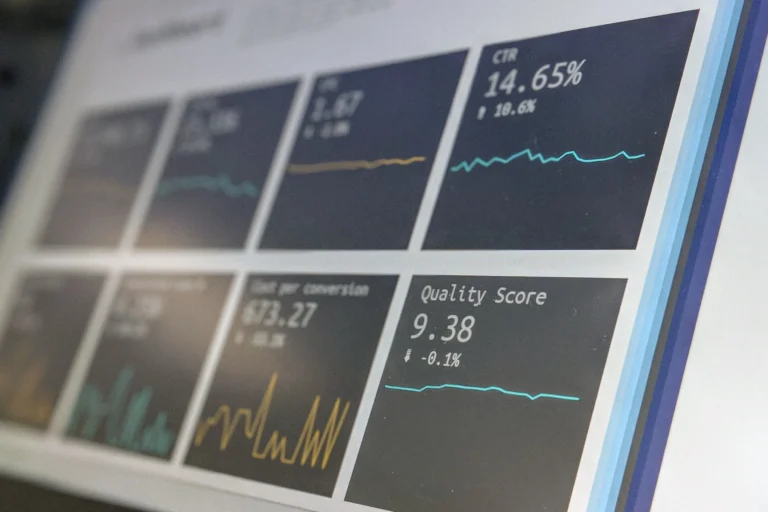If you ask financial planning and analysis (FP&A) professionals about strategic management tools, they will eagerly name SWOT, PESTL, “what if” analysis, vision and mission statements, Porter’s five forces… but hardly ever you would find a dashboard or dashboard design on the list.
This short article explains the strategic role of dashboard design and helps you set the right key performance indicators (KPIs) and benchmarks for your business.
What we measure we become: the importance of choosing the right KPIs
“Dashboards are for performance monitoring,” – one would argue. “What does it have to do with strategic management?”
Srinivas Venkatram, founder and CEO of an ideas-in-action lab, called one of his books: “What we measure, we become.” These wise words aptly describe the impact dashboards have on our business.
Have you heard of the cobra effect? The term was invented by the economist Horst Siebert. During British rule in India, the British government worried about the number of cobras in Delhi and offered a reward for every dead cobra. It was originally a successful strategy – a large number of snakes were killed for the reward. However, over time, inventive people began to breed cobras for the sake of earning money.
If you start paying glass makers for a kilogram of glass they produce, they will end up with a very thick glass (so thick that you can hardly see through it). If you pay them per square meter, they will produce very thin (and therefore fragile) glass.
The KPIs you choose to measure the performance of your business, the KPIs you use in traffic lights, and the gauges in your dashboards drive your teams’ efforts and shape your business. Think twice before including anything in your dashboard.
There are several reasons why you should ditch the old FP&A reports
However, in my practice, Controlling and FP&A teams don’t think twice about the structure of their reports. We are not in the habit of constantly reviewing and improving them. We just keep releasing the same reports every month, every week, every day.
Unfortunately, I hear quite often: “We’ll start by copying our old reports into our new business intelligence tools” from companies undergoing digital transformation. Thus, they immediately reject all the benefits that technology has to offer.
High quality, complete real-time data readily available from various sources requires a paradigm shift. If we are to reap the fruits of the new technology, we must start thinking differently, and our management reports must look different.
The “oldest” part of our old reports are plans and budgets. We carry this legacy of the 1950s and 1970s into the twenty-first century. Management by Objectives (MBO) is obsolete. We started to challenge it in the 1990s when the Beyond Budgeting movement emerged. But just know, with the fast spread of business intelligence tools and a powerful push by the COVID-19 pandemic, we see a viable alternative available to virtually every business.
Rather than comparing your company’s performance against a fixed target, say 5% sales growth, set a relative target of + 1% growth over the industry average or most important competitor. More objective performance metrics than plans and budgets are becoming available. Why stick with old ones?
At this point, we have established that not only the KPIs themselves but the benchmarks against which we compare them are strategically important. But we don’t stop there.
Drilling down is not a panacea: look for the meaning behind numbers
I’m pretty sure each of you has heard a similar dialogue between company management and your fellow financial controller or financial business partner.
– Our sales are declining this month.
– Why?
– Because our fresh food sales are underperforming.
– And why is that?
– It is driven primarily by dairy products.
– Why is this happening?
– As butter and yoghurts are significantly down.
– Why???
– That I do not know…
It might be frustrating to hear “I do not know”, but are controllers really to blame? In most of the companies I’ve worked for, reports and dashboards are nothing more than systems of breakdowns and drill-downs. Financial analysts are very good at drilling down to the smallest detail, but do they really understand performance drivers?
One of the tremendous benefits of modern business intelligence technology and tools is the ability to integrate data from multiple sources. You can have operational and financial data from different internal systems and external sources in one report. Why don’t you?
Instead of just slicing sales data across all possible dimensions, you can collect in one place data on product availability, data on queue lengths, data on prices, data on advertising activity of competitors. With this at their disposal, your controllers will answer you not only with a description of the problem (which categories are declining) but also with a plausible explanation (50% discount on competitor’s butter and delays in yoghurt delivery from a major supplier to our warehouse).
In summary
- Take dashboard design seriously. Gain the skills you need or bring in experts.
- Use a transition to Business Intelligence tools as an opportunity to reset your FP&A and Operational reporting completely.
- Choose the KPIs carefully for your dashboards, they have more strategic value than it seems.
- Choose objective relative benchmarks (e.g., industry averages) rather than fixed subjective benchmarks (e.g., budget).
- Move towards integrated operational and financial reporting. Bring important operational drivers into financial reports.
- Help your financial analysts go beyond your department’s KPIs to overall business understanding.
I believe that by following these steps, you will create dashboards that not only detect problems but also help fix them. A dashboard is not just a monitoring tool. Unless you make it one.
This article was first published at FP&A Trends
